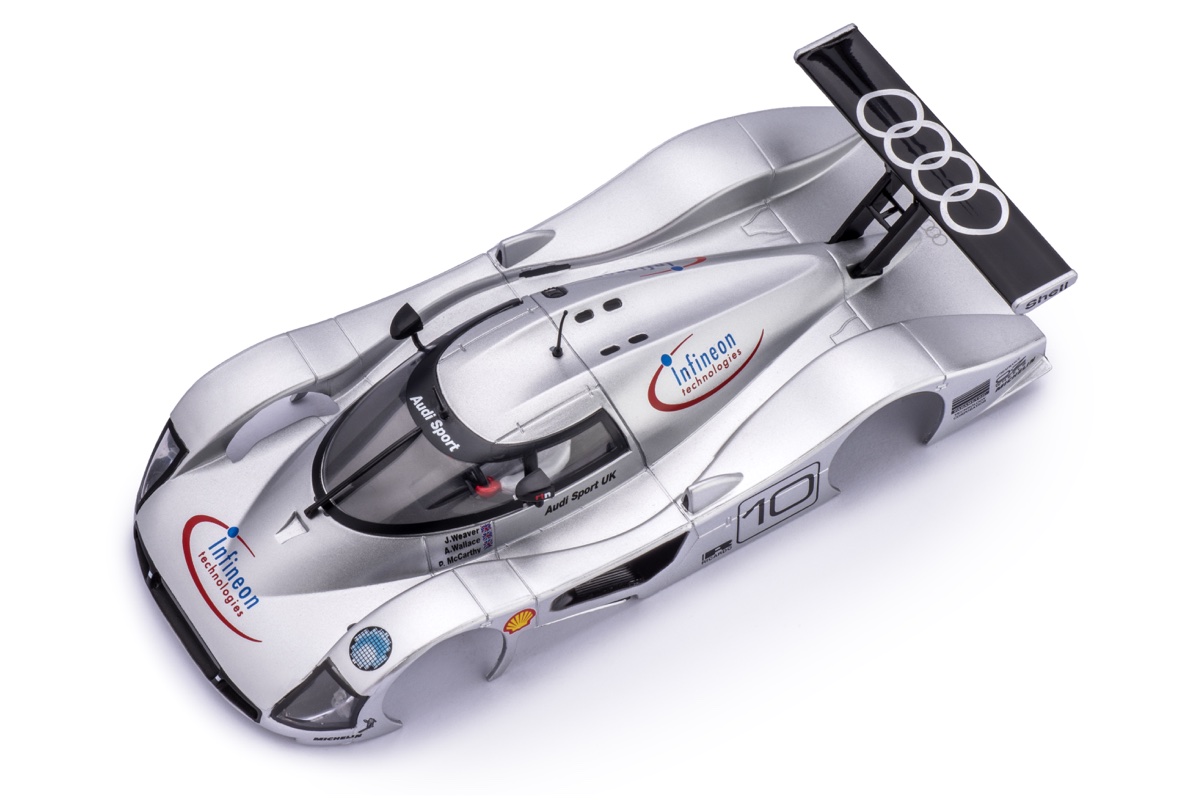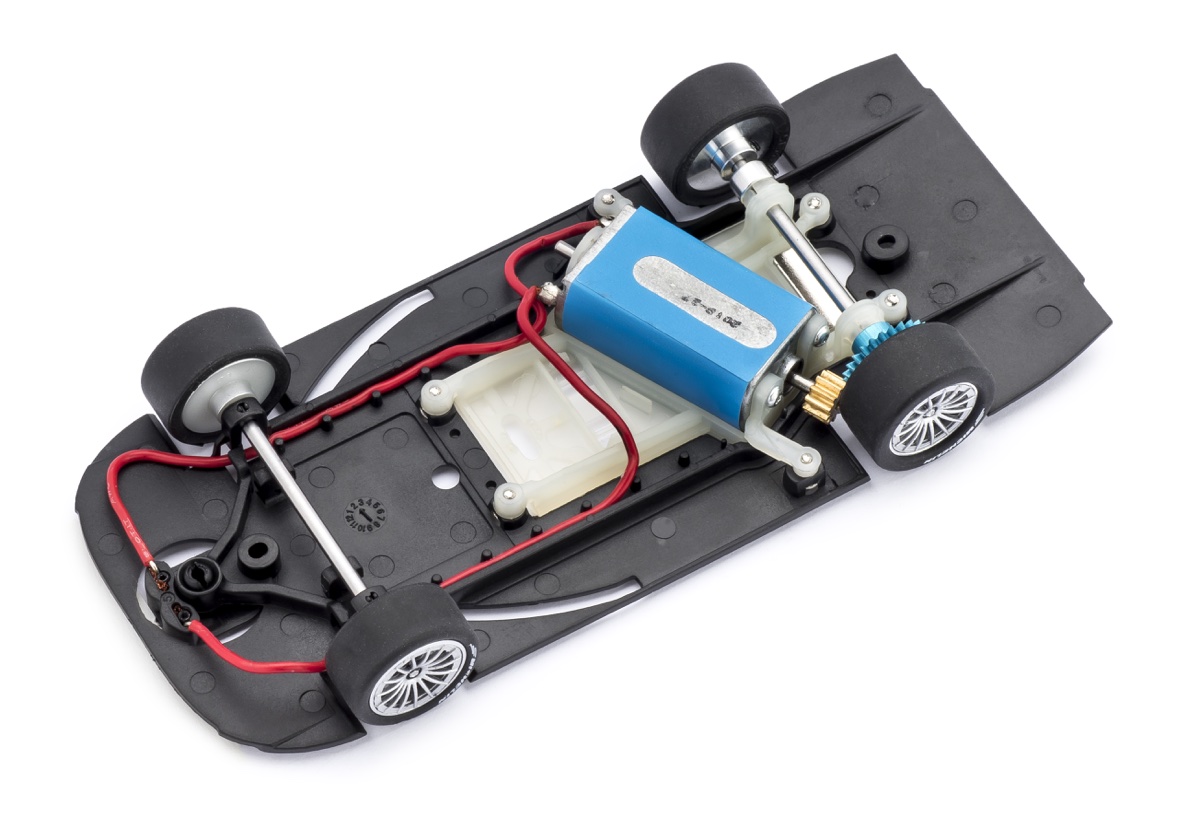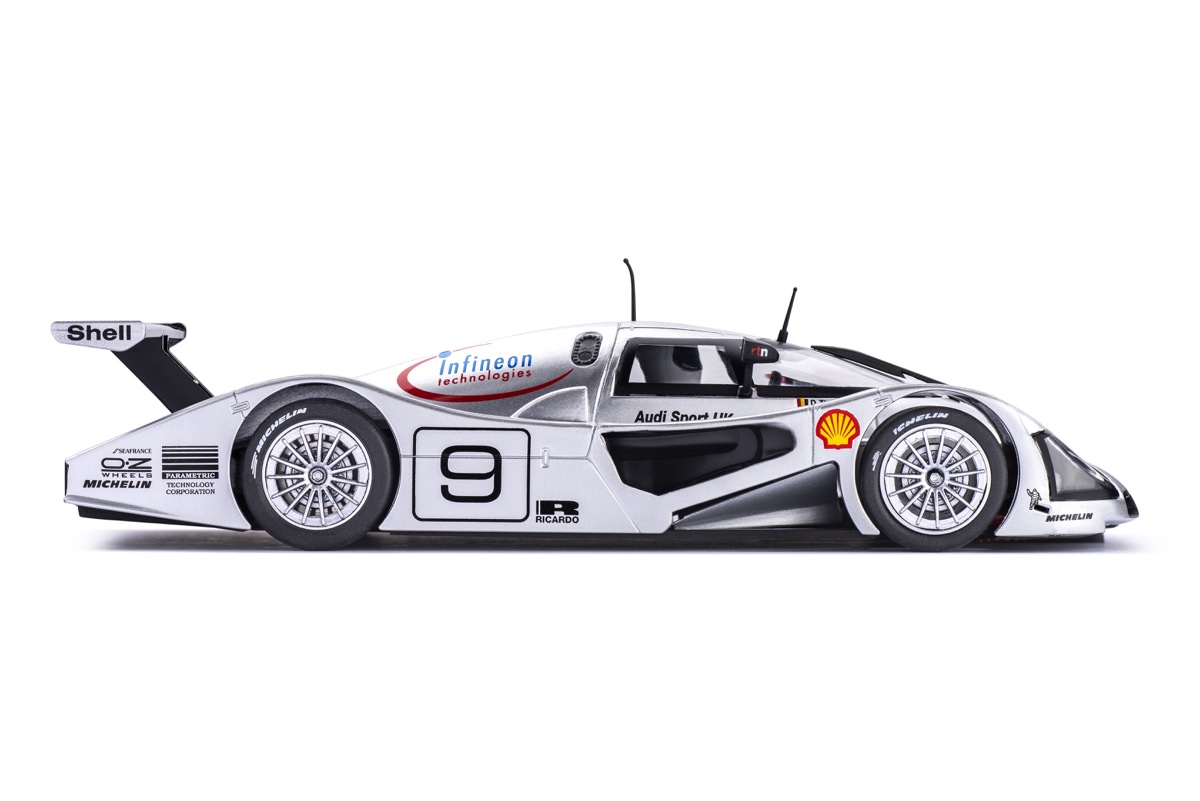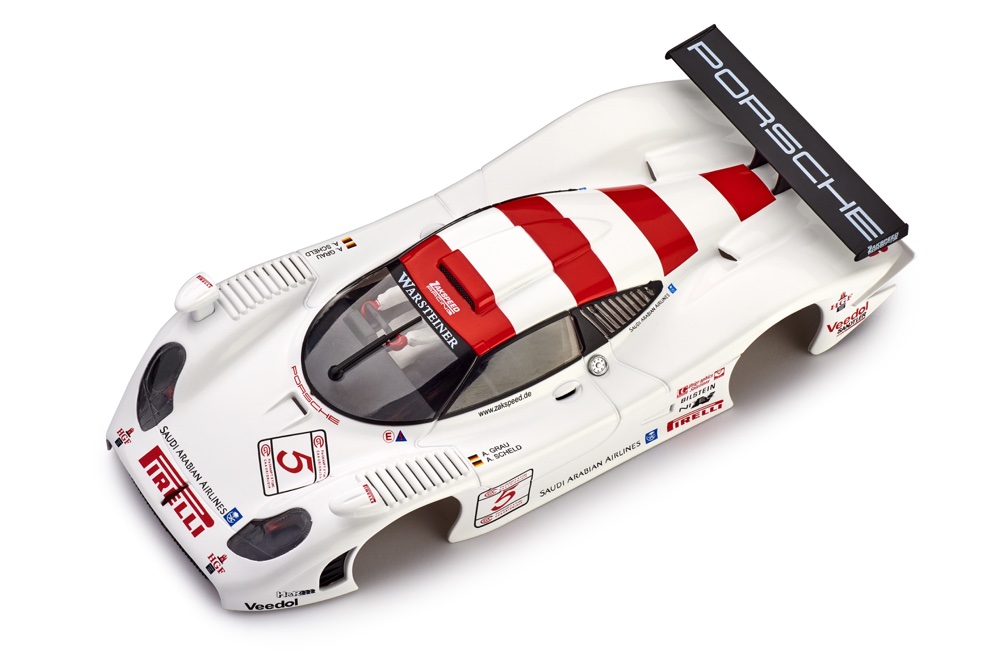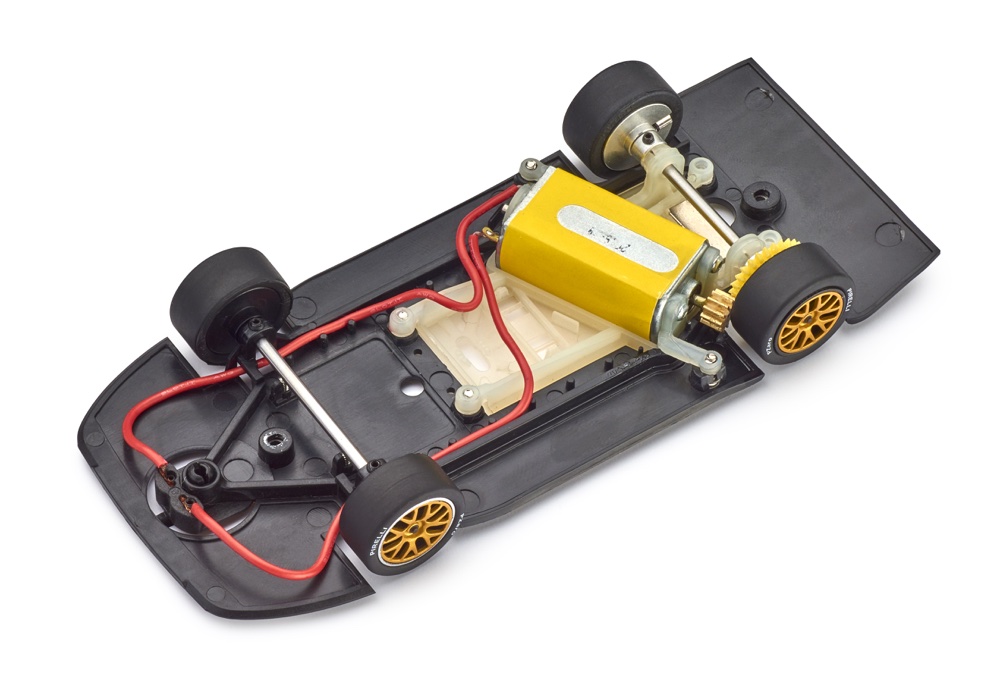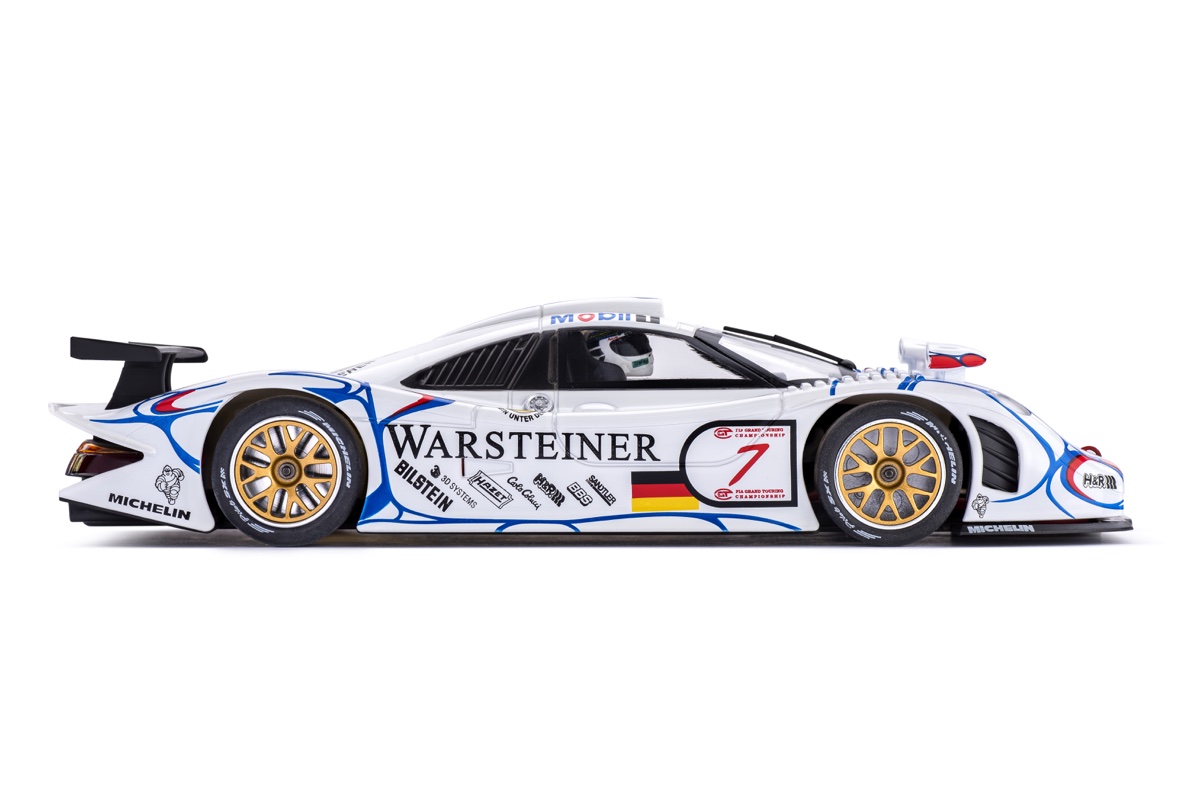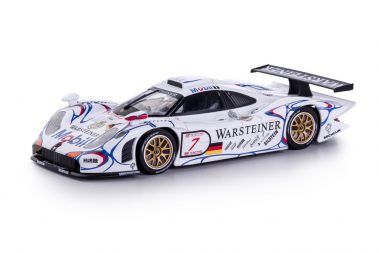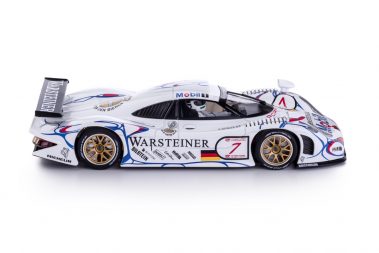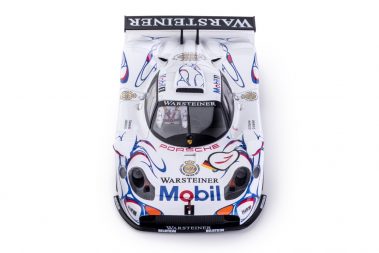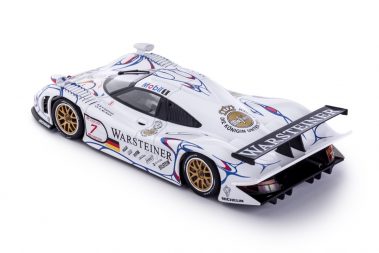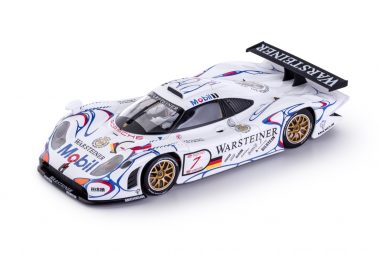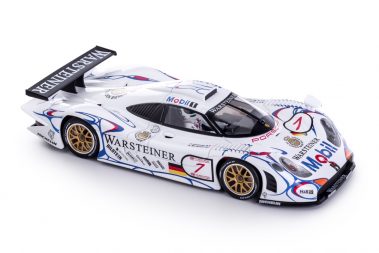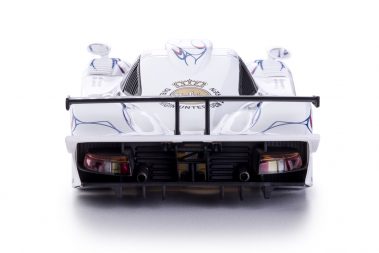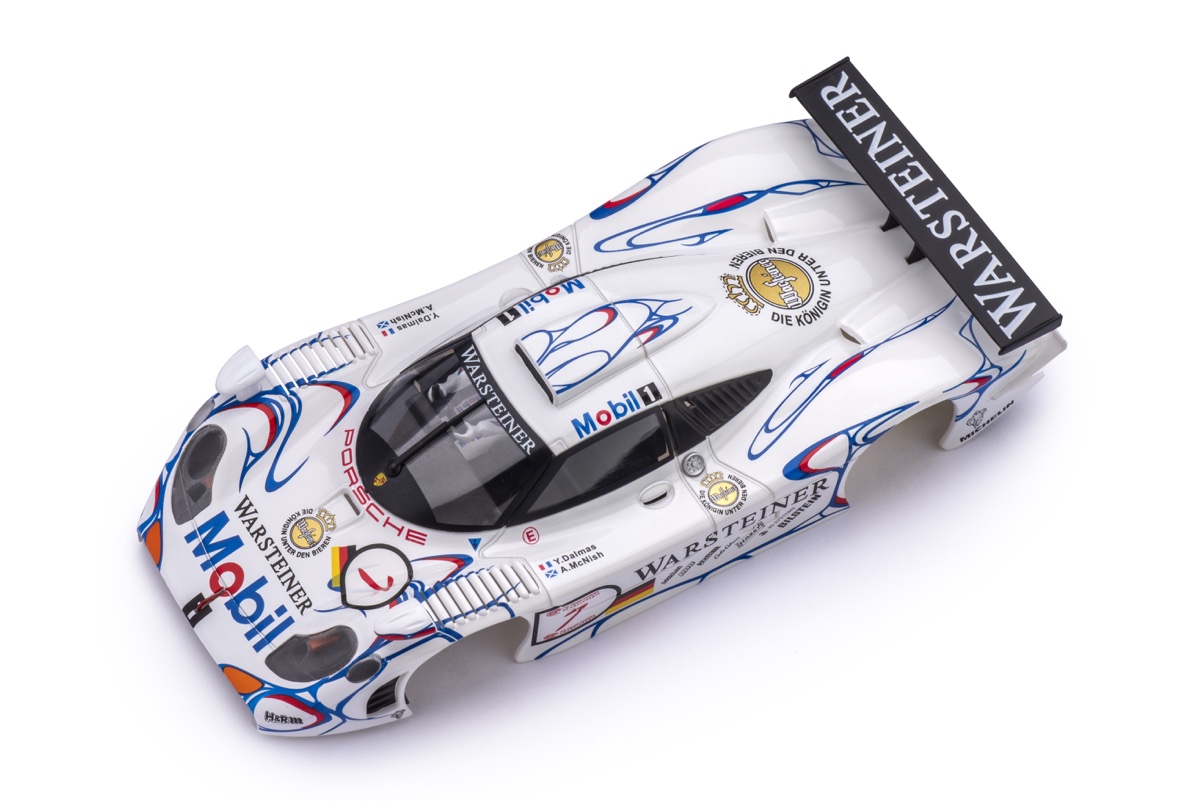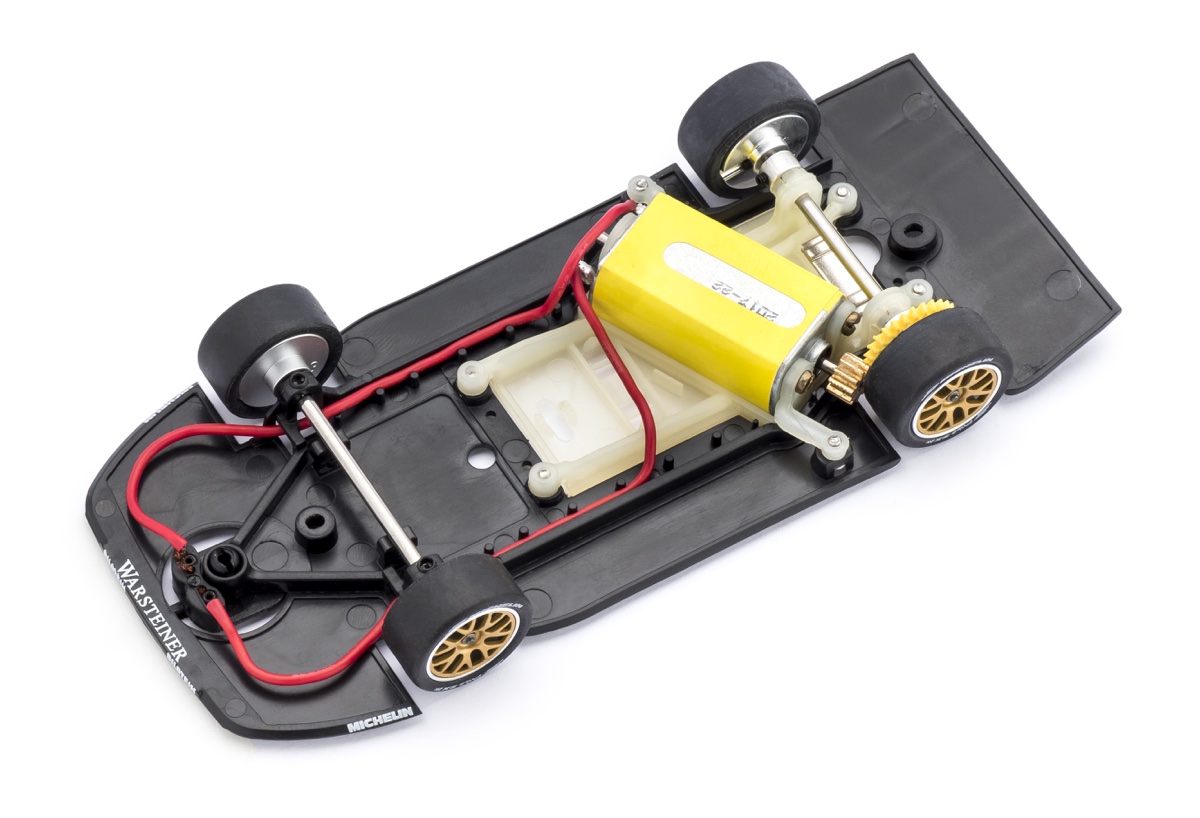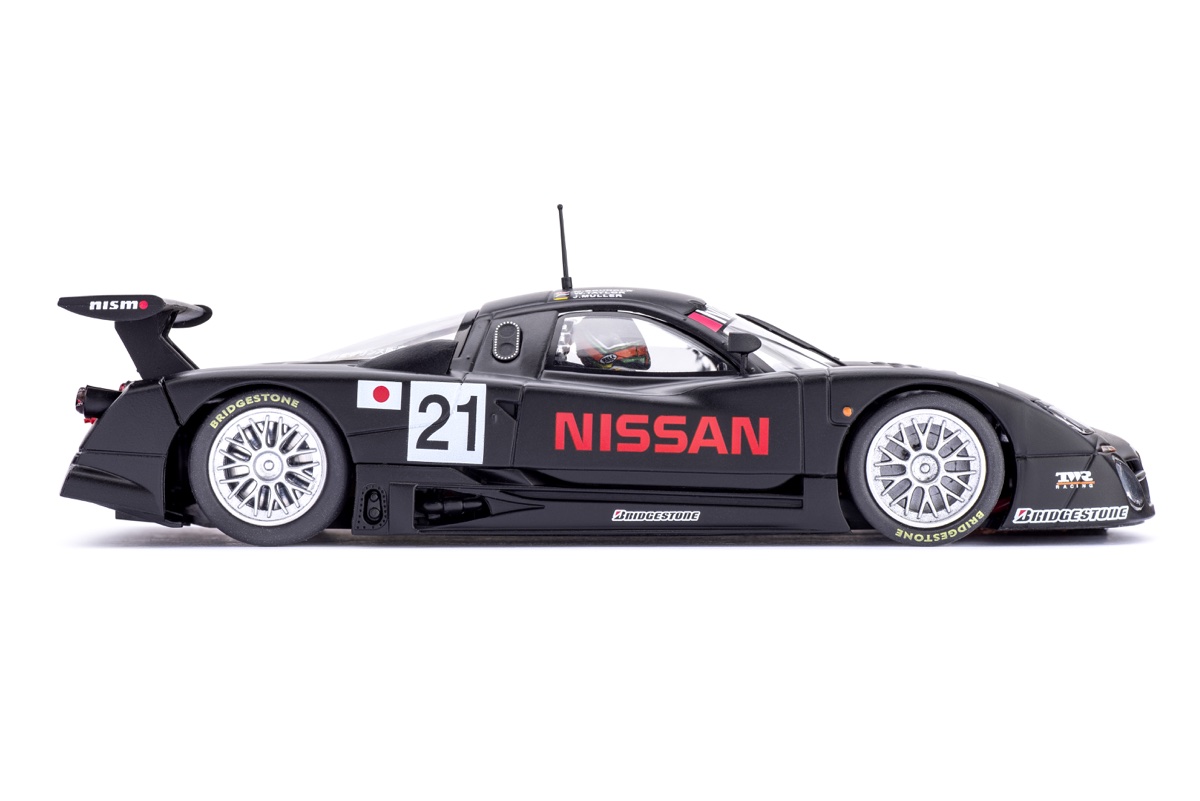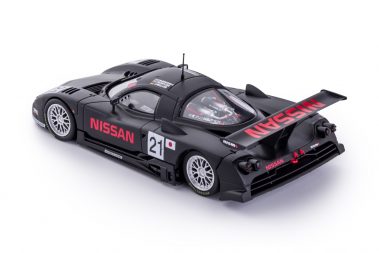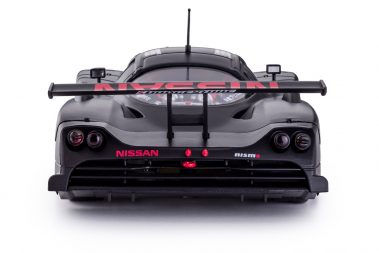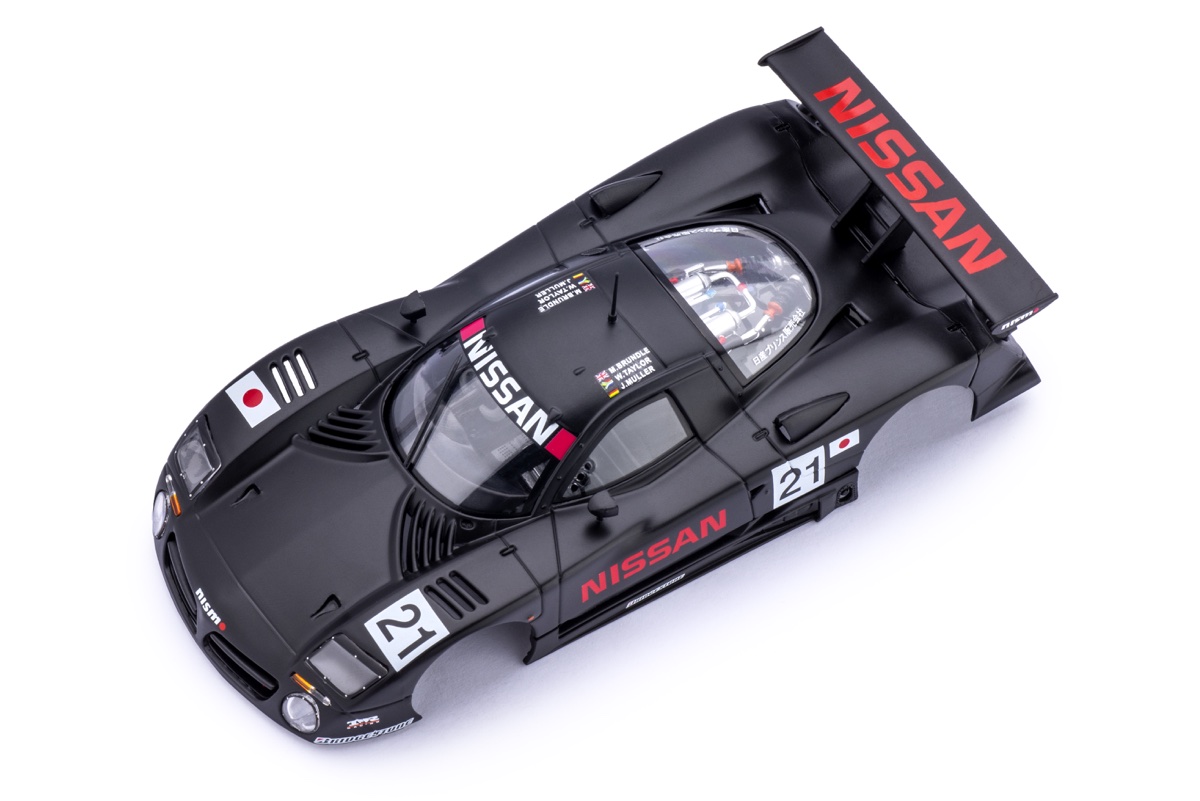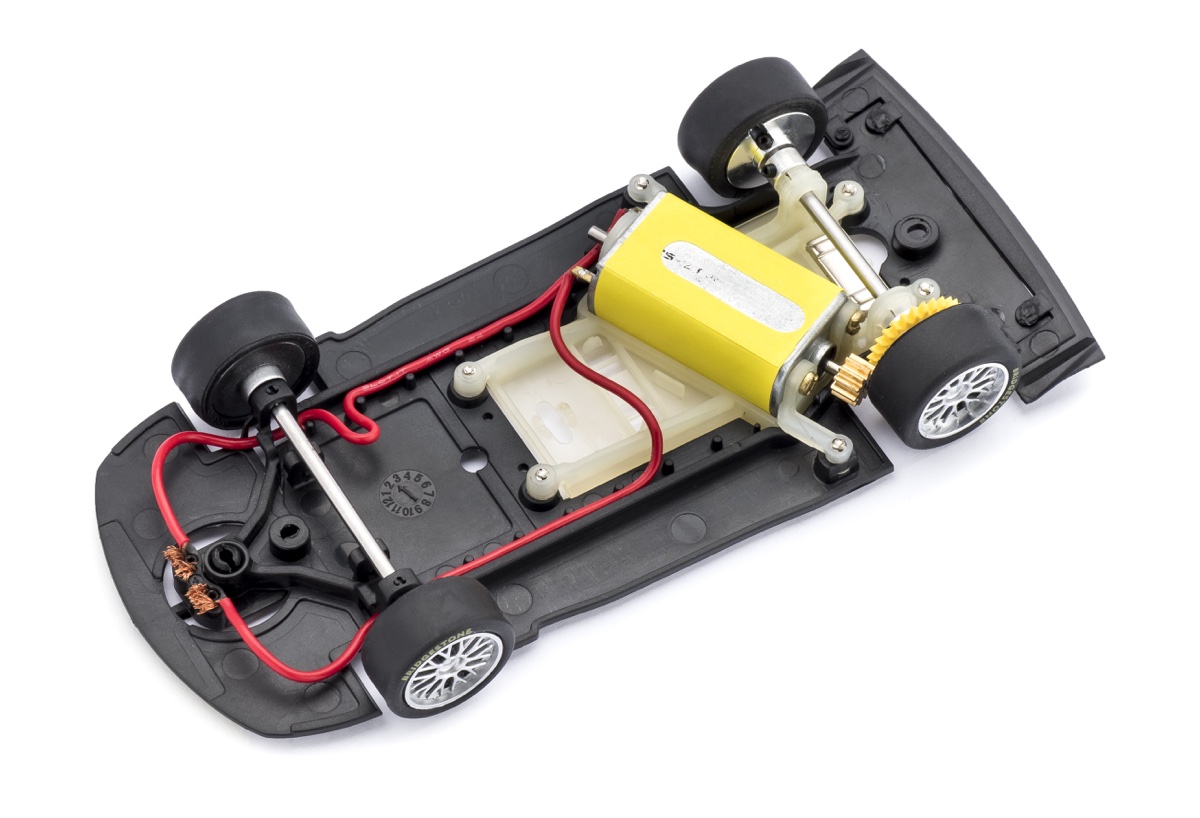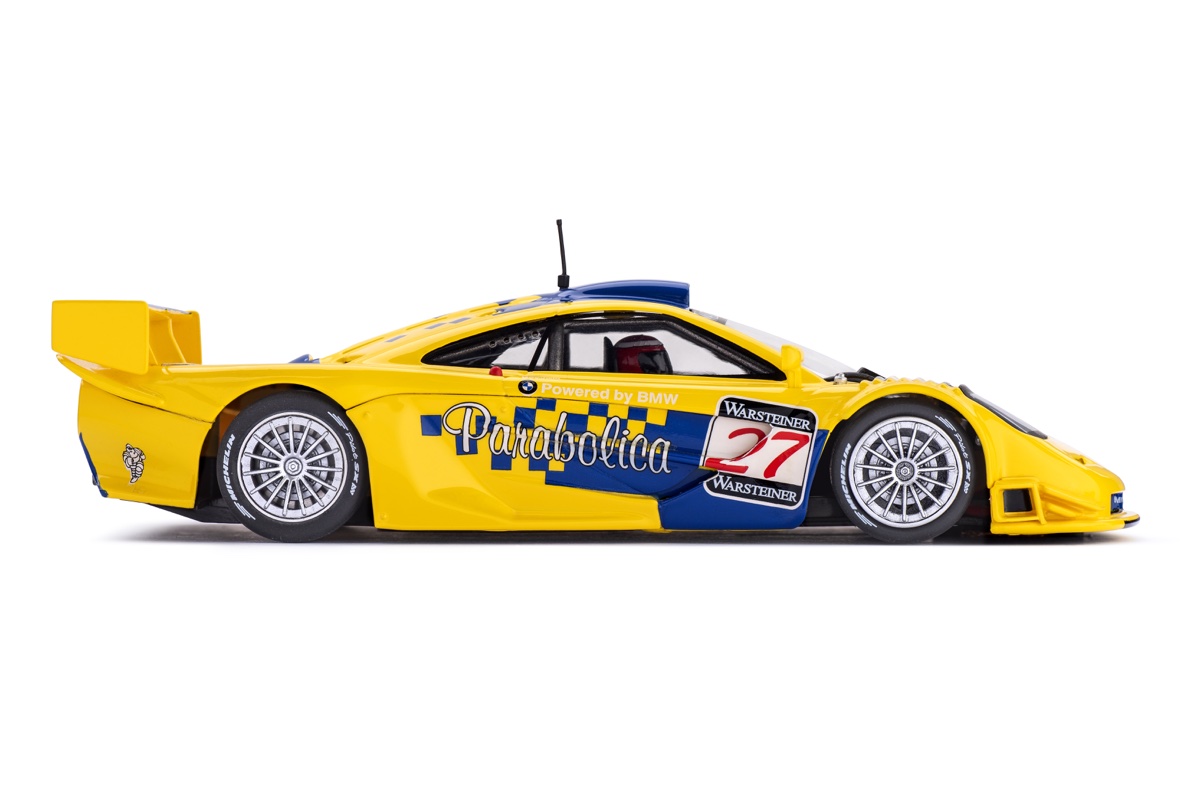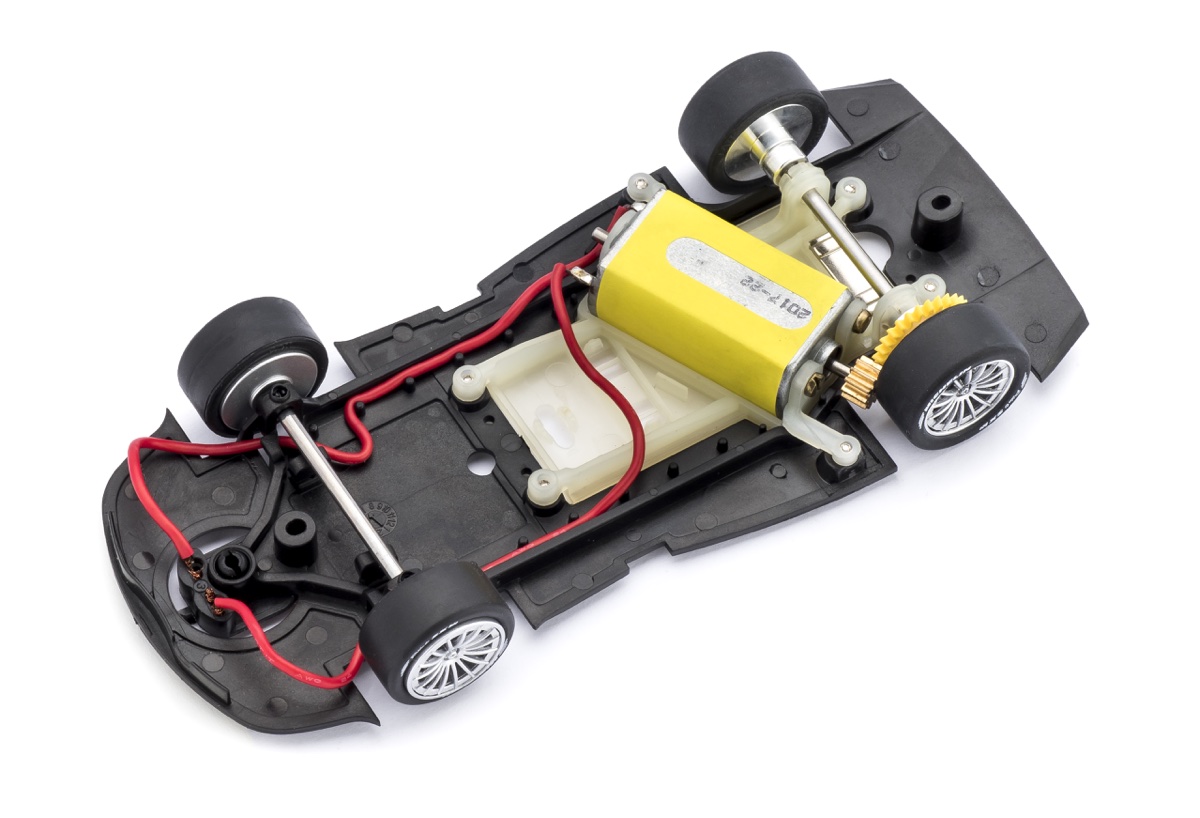AUDI R8C
1999
AUDI R8C
1999 - Presentation
#09 D. Theyes, S. Johansson, S. Ortelli
#10 J. Weaver, A. Wallace, P. Mcarthy
CA12d
The Audi R8C, designed by Peter Ellerey and Tony Southgate, only took part in the 1999 edition of the 24h of Le Mans. It is still probably one of the most beautiful prototypes in Le Mans history. Unfortunately, its performance did not match its elegance, mostly for lack of development time. Racing Technologies Norfolk built a carbon fibre bodywork around a monocoque frame, all powered with a 358 cc V8 biturbo engine. James Weaver said that the R8C, at one time during the race, had become one of the best cars he had ever driven. None of the two competing R8Cs was able to reach the end of the race. In the following years, Audi opted for an open cockpit version of the R8 and the R8C became the basis for the Bentley Exp Speed 8 project, which won the Le Mans 24 Hours in 2003. This model reproduces the “presentation” car in which the two sides differ in race number and driver’s name. Note that the model also correctly reproduces the shape of the trilobate air intake on the nose, replaced in the race version by a single gap intake.
